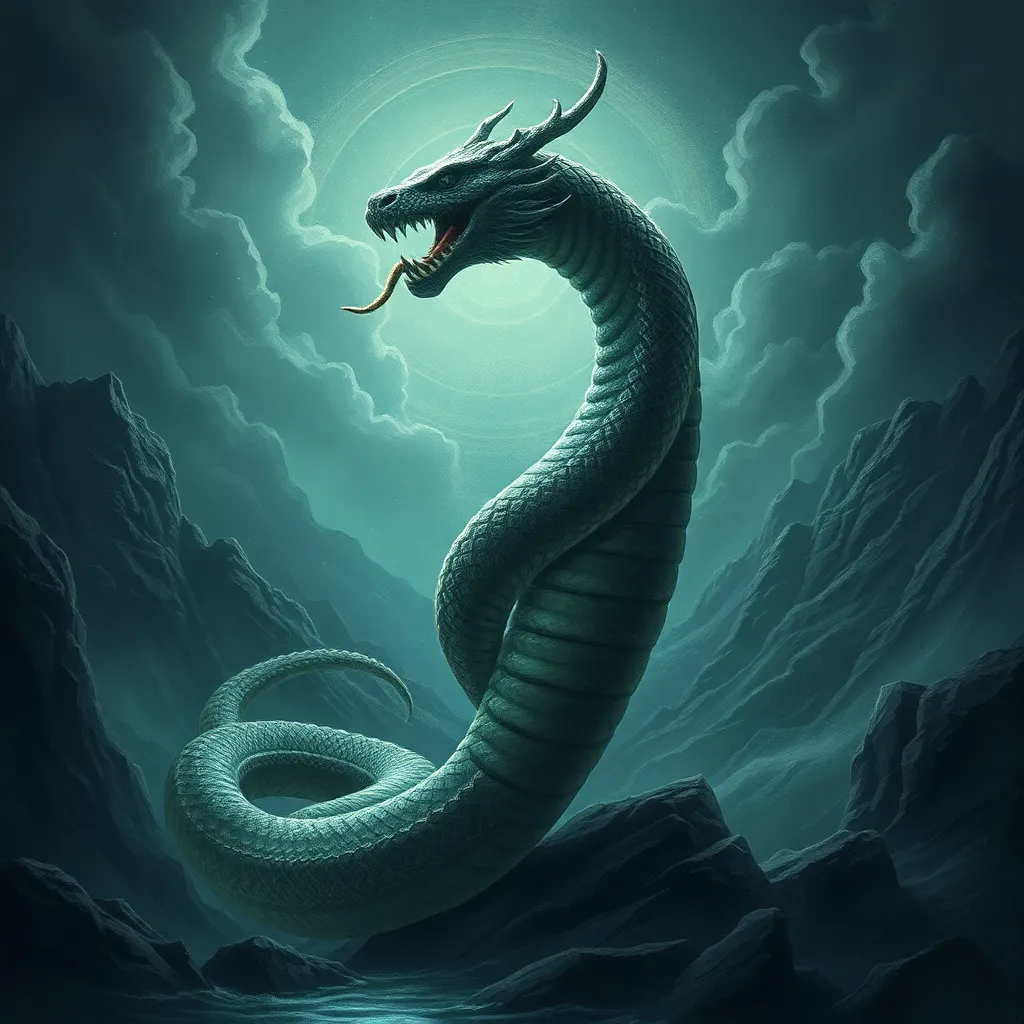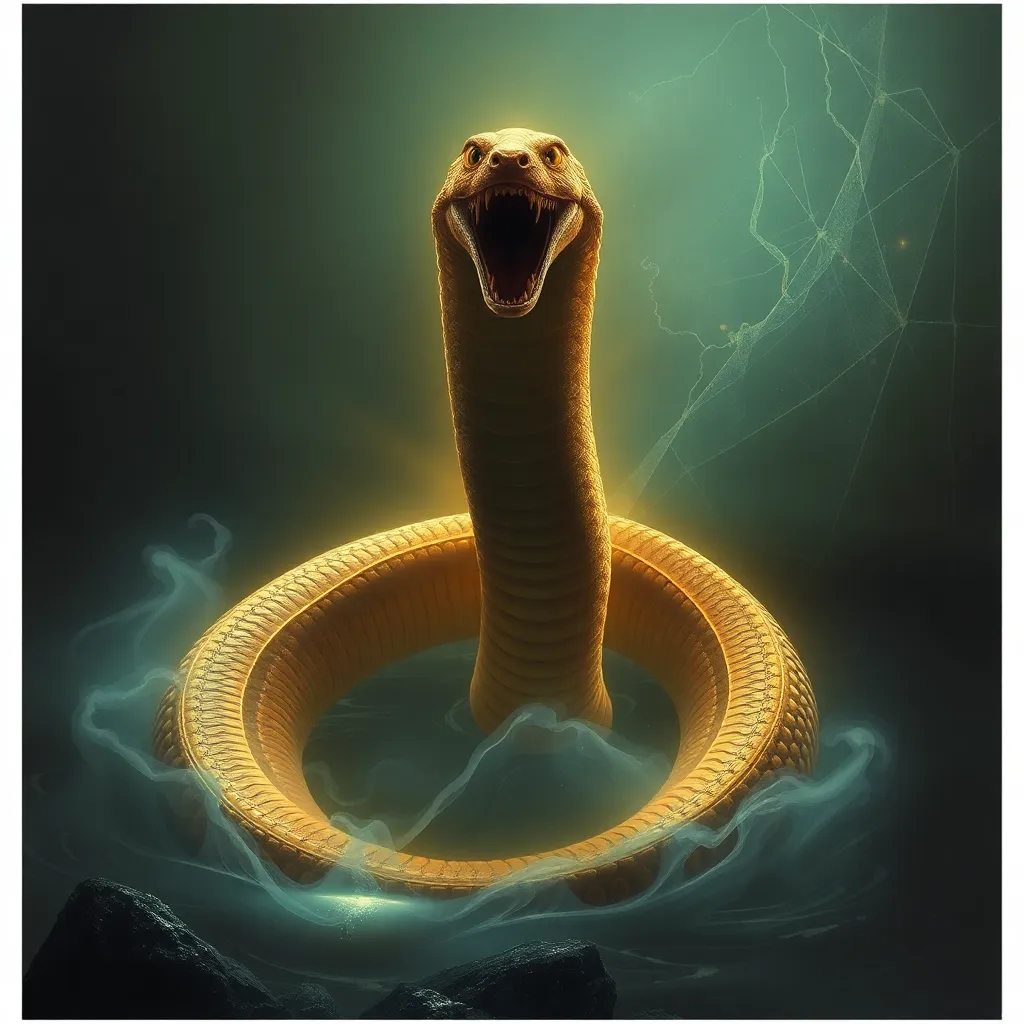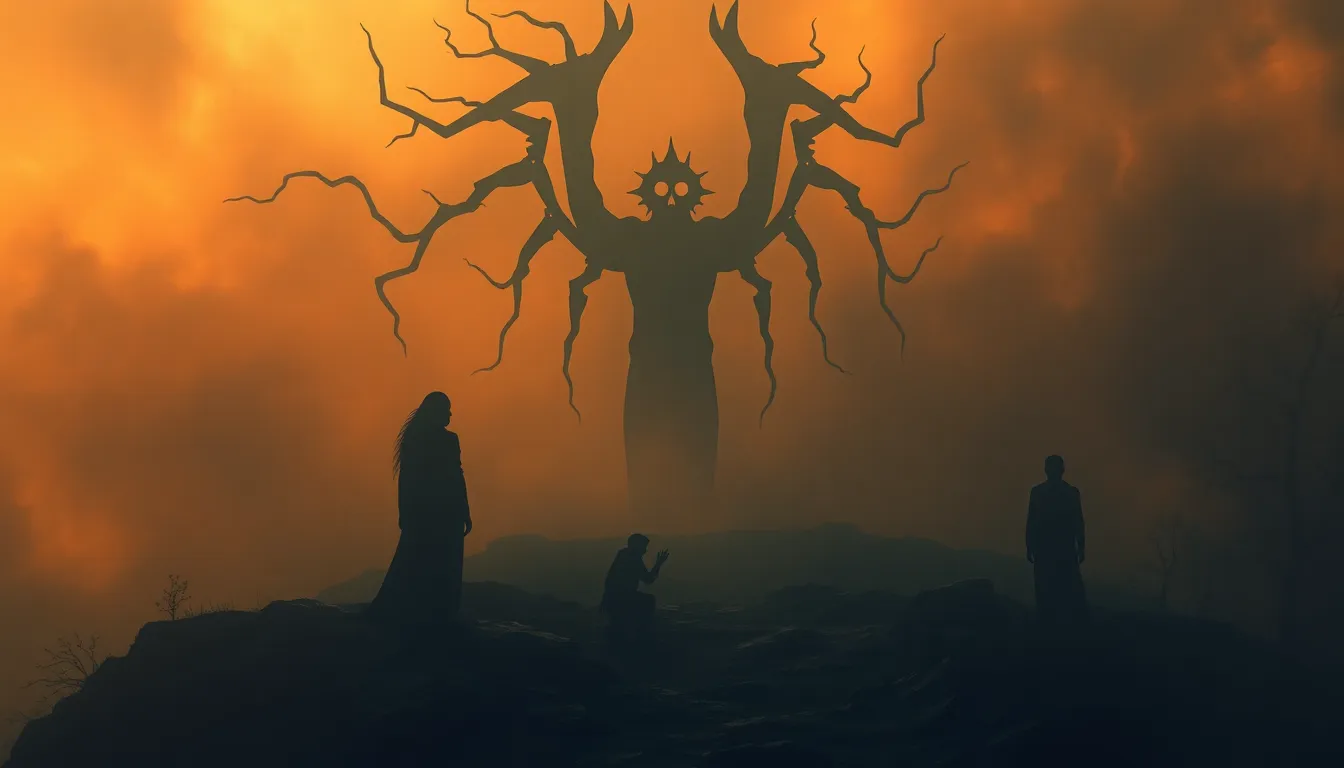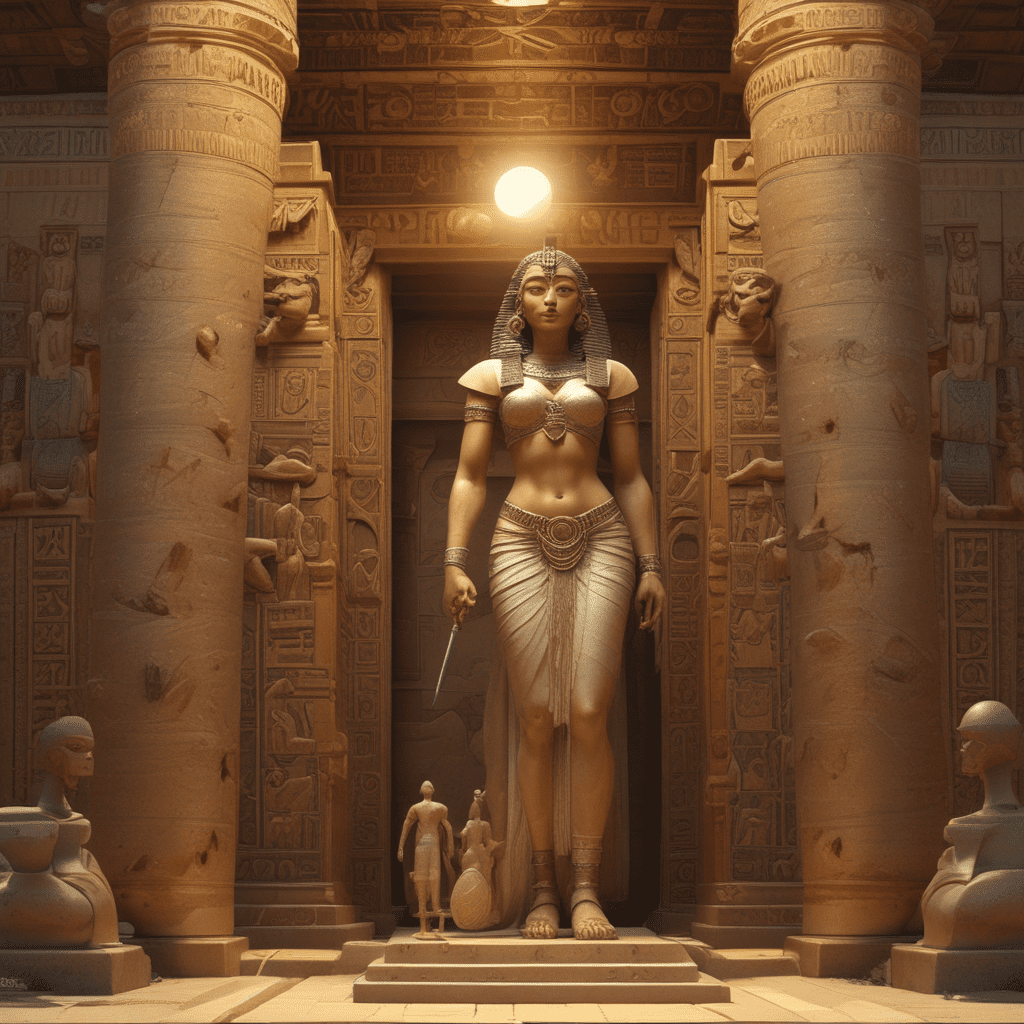Beyond the Serpent: Jörmungandr’s Symbolism in Norse Art and Literature
I. Introduction
Jörmungandr, also known as the Midgard Serpent, is one of the most fascinating figures in Norse mythology. This colossal serpent encircles the Earth, embodying both the chaos of nature and the intricate balance of the cosmos. In Norse culture, symbols play a vital role in conveying complex narratives and understanding the world, making the study of Jörmungandr particularly significant in exploring the depth of these stories. This article aims to delve into Jörmungandr’s multifaceted symbolism as depicted in both art and literature, revealing the serpent’s profound impact on Norse mythology and culture.
II. Jörmungandr: The World Serpent in Norse Mythology
Jörmungandr’s origins are deeply rooted in the Norse creation myth, where he is one of the children of Loki, the trickster god, and the giantess Angerboda. His role in the mythological cosmos is crucial, as he represents not only chaos but also the boundaries of the known world, encircling Midgard (Earth) and keeping the forces of chaos at bay.
Jörmungandr’s relationship with other deities, especially Thor, is a focal point of many myths. Their fates are intertwined, culminating in an epic battle during Ragnarök, the end of the world in Norse belief. This confrontation symbolizes the inevitable clash between order and chaos, where Jörmungandr’s death marks the end of an era.
During Ragnarök, the serpent rises from the ocean, causing great upheaval and signaling the onset of doom for the gods. His significance at this time underscores the dual nature of his character: he is both a harbinger of destruction and an essential part of the cosmic cycle.
III. Visual Representations of Jörmungandr in Norse Art
Jörmungandr’s depiction in Viking Age artifacts offers valuable insights into how the Norse viewed this formidable creature. Artists often represented him in various forms, each imbued with symbolic meaning.
A. Analysis of Jörmungandr in Viking Age Artifacts
- Jewelry and Metalwork: Jörmungandr frequently appears in intricate designs on brooches, rings, and other metalwork, often intertwined with other elements of nature, symbolizing his connection to the world.
- Wood Carvings and Stone Sculptures: In carvings, Jörmungandr is sometimes depicted in a more abstract form, emphasizing his serpentine qualities and representing the cyclical nature of life and death.
B. Symbolic Meanings Conveyed through Artistic Depictions
The artistic representations of Jörmungandr often convey themes of protection and danger, reflecting the duality of nature itself. The serpent’s coiling form suggests both the containment of chaos and the potential for destruction.
C. Comparison with Serpentine Motifs in Other Cultures
Comparatively, serpentine figures appear across various cultures, often symbolizing similar themes of chaos and renewal. For instance, in Mesoamerican mythology, serpents can represent both fertility and destruction, which resonates with Jörmungandr’s role in Norse stories.
IV. Jörmungandr in Norse Literature
In Norse literature, particularly in the Poetic Edda and Prose Edda, Jörmungandr’s character is explored through various mythological tales that reveal his significance and thematic depth.
A. Examination of Primary Sources
The Poetic Edda presents Jörmungandr in several poems, portraying him as a fierce adversary of Thor. The Prose Edda, written by Snorri Sturluson, elaborates on his origins and role in the cosmic struggle, providing a more narrative-driven approach to his character.
B. Thematic Interpretations of Jörmungandr’s Appearances
In these texts, Jörmungandr often embodies the themes of fate, conflict, and the cyclical nature of existence. His encounters with Thor highlight the struggle between gods and giants, representing the perpetual battle between order and chaos.
C. Literary Devices Used to Enhance Jörmungandr’s Symbolic Significance
Poetic devices such as kennings and alliteration enrich the depiction of Jörmungandr, emphasizing his power and the fear he instills. Descriptive language evokes imagery of his vastness and the danger he represents, enhancing the reader’s understanding of his character.
V. Jörmungandr as a Symbol of Chaos and Order
Jörmungandr’s character embodies a fascinating duality, representing both chaos and order in the Norse worldview.
A. Exploration of Duality in Jörmungandr’s Character
As a creature born of Loki, Jörmungandr is inherently tied to chaos and destruction. However, his role in maintaining the boundaries of the world also aligns him with order, creating a complex character that reflects the struggles inherent in nature.
B. Jörmungandr’s Role in the Balance of Nature and the Cosmos
In Norse mythology, Jörmungandr’s cyclical nature signifies the balance of life and death, creation and destruction. His existence is essential for maintaining the cosmic order, demonstrating how chaos can coexist with harmony.
C. The Serpent’s Embodiment of Fear and Respect in Norse Culture
The fear of Jörmungandr is palpable in Norse tales, yet he is also respected as an integral figure within the pantheon of gods and giants. This duality reflects the Norse people’s understanding of nature’s unpredictability and the respect it commands.
VI. Jörmungandr’s Influence on Modern Interpretations
The fascination with Jörmungandr continues in contemporary literature and media, reflecting a resurgence of interest in Norse mythology.
A. Jörmungandr in Contemporary Literature and Media
Modern adaptations of Norse myths often portray Jörmungandr as a complex character, exploring themes of environmentalism, chaos, and the struggle against fate.
B. The Resurgence of Interest in Norse Mythology in Popular Culture
Films, television series, and novels that incorporate Norse mythology have introduced Jörmungandr to new audiences, often reinterpreting his symbolism in ways that resonate with contemporary themes.
C. How Modern Interpretations Reflect or Distort Ancient Symbolism
While some modern interpretations capture the essence of Jörmungandr’s character, others may distort his symbolism, focusing more on sensationalism than on the rich cultural narratives that define him in ancient texts.
VII. Comparative Analysis: Jörmungandr and Other Mythological Serpents
The study of Jörmungandr also invites comparisons with serpentine figures in other mythologies, revealing both commonalities and distinct differences.
A. Similarities and Differences with Serpentine Figures in Other Mythologies
Like Jörmungandr, many cultures feature serpents as symbols of chaos and transformation. For example, the Mesopotamian Tiamat embodies chaos and creation, while the Mesoamerican feathered serpent Quetzalcoatl represents duality and wisdom.
B. The Universal Symbolism of Serpents Across Cultures
Across various cultures, serpents symbolize a range of concepts, including fertility, danger, and transformation, illustrating the universal nature of this archetype.
C. Lessons from Comparative Mythology Regarding Jörmungandr’s Significance
By examining Jörmungandr alongside other mythological serpents, we gain insights into how different cultures interpret chaos, order, and the cyclical nature of existence, enriching our understanding of Jörmungandr’s role in Norse mythology.
VIII. Conclusion
Jörmungandr’s importance in Norse mythology, art, and literature is profound, symbolizing the intricate balance between chaos and order. As we reflect on his multifaceted symbolism, we gain a deeper appreciation for the narratives that shaped the Norse worldview and continue to inspire modern interpretations of ancient myths.




